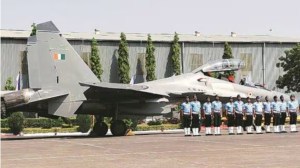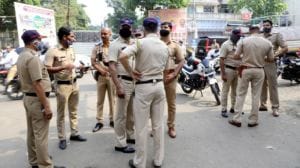Birth pangs
AT a time when death has squeezed the space for births in the Valley, the stress of work has begun taking its toll on the doctors at Kashmir...

AT a time when death has squeezed the space for births in the Valley, the stress of work has begun taking its toll on the doctors at Kashmir’s lone government maternity hospital.
Over the past two years, six doctors at Srinagar’s Lal Ded Hospital have suffered abortions while many others have had pre-term deliveries: a direct consequence of pressure and anxiety of patient care.
The hospital averages a hundred child births a day and more than 40 cases of caesareans. The only one in Kashmir to bear the burden of birth ever since maternity wards of other hospitals across the districts became defunct.
‘‘It is the grueling work schedule that is responsible,’’ says Head of Department, Gynaecology and Obstetrics, Shahida Mir. ‘‘We work under such pressure that pregnant doctors cannot easily avail of leave.’’
One of the doctors who suffered an abortion is a former registrar. She left the hospital three months ago, soon after she suffered a mid-term abortion.
Another doctor—a registrar at the hospital now—developed complications after attending two emergencies in a row. She lost her child at the time of delivery—a phenomenon called intra-uterine death (IUD), that doctors say was caused by work related stress.
Another PG had a normal pregnancy for eight months when complications surfaced. She was admitted in a private nursing home only to be told that her child had died.
AN average day at Lal Ded is an overworked one. About 600 patients visit the Out Patient Department every day. Each have at least two companions. The hospital has 360 beds but gets about 800 patients. That’s two patients for every bed.
‘‘Lal Ded is supposed to be the tertiary hospital but now it has come to perform all roles—from being a dispensary to a referral hospital,’’ says Farhat Jabeen, a gynaecologist and assistant professor at the hospital. ‘‘The problem is huge in summers, the peak season for deliveries,’’ adds Jabeen. There are only 15 consultants—only 11 of them confirmed, 14 registrars and 38 post graduates to handle the situation. On his round-the-clock duty days in the week, a doctor has to make three periodic rounds, attend OPD, maintain labour room and perform or assist in upto 30-35 caeserains. ‘‘And still the ratio of mother-child death to successful births is not higher than the acceptable WHO standards,’’ says Shahida Mir.
THE burden of responsibility is weighing down the doctors at Lal Ded. The situation was not so grave till 1989. ‘‘The district hospitals were fully functional and only emergency cases came to Lal Ded. The deliveries and the OPD have grown three fold since,’’ says Shahida. ‘‘After the violence broke out, the facilities broke down, the specialists posted in disztricts went abroad and the Pandits migrated.’’
Now the district hospitals lack anaesthetists, consultants, paediatricians, blood banks and other infrastructure necessary for caeserians or normal childbirths. So much so, they are not able to perform even ante-natal care.
Then post-graduate admissions stopped for ten years once militancy broke out in 1989; the Valley produced only 5 PGs in that period.
‘‘Lal Ded is the only feeding hospital in the Valley and once it stopped producing PGs, we didn’t have any to spare for the districts,’’ says Shahida.
With the number of patients on the increase, she has little hope of the ratio between doctors and patients in the Valley improving soon.





- 01
- 02
- 03
- 04
- 05


























